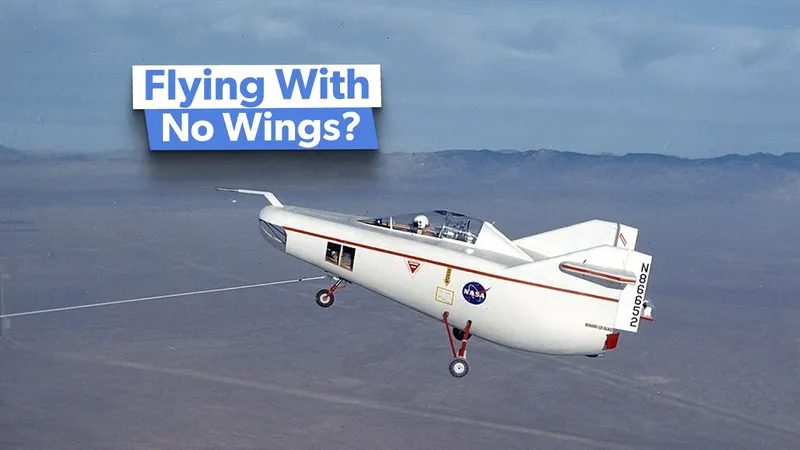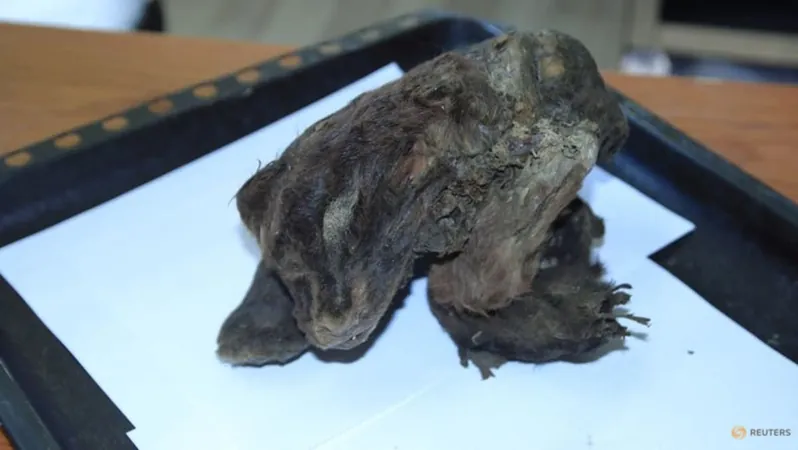
5 Fascinating Facts About NASA's Quirky M2-F1 Wingless Plane That Will Blow Your Mind!
2024-11-22
Author: Wei Ling
5 Fascinating Facts About NASA's Quirky M2-F1 Wingless Plane That Will Blow Your Mind!
Designed in 1962 and taking to the sky for the first time in 1963, NASA's M2-F1 "lifting body" aircraft is not only memorable for its unusual design, often referred to as the "flying bathtub," but it also holds an important place in the evolution of aerospace technology. This groundbreaking aircraft set the stage for future NASA spacecraft and remains an engineering marvel. Here are five captivating facts you might not know about this extraordinary wingless wonder.
1. Mastering Flight Without Wings: A Game Changer in Aerodynamics
The M2-F1, truly a pioneer, was the world’s first manned lifting body aircraft—a significant leap for aeronautical engineering. Unlike traditional planes that rely on wings for lift, the M2-F1 utilizes its unique shape, designed specifically to enhance aerodynamics, making it a revolutionary design in both aviation and space exploration. This innovative approach was crucial for developing better methods for spacecraft reentry, enabling safer controlled landings and minimizing destruction from the extreme heat of reentry. The design's success directly informed the construction of future spacecraft, most notably the NASA Space Shuttle.
2. Chuck Yeager Takes to the Skies
Iconic test pilot Chuck Yeager, known for breaking the sound barrier, also had a role in the M2-F1 program. After Milt Thompson's initial flights, Yeager took command on the 18th flight, showing his competitive spirit and skill during testing. He succeeded in pushing the boundaries of speed and maneuverability, making a remarkable landing that impressed onlookers. Yeager's experience with the M2-F1 contributed to the ongoing legacy of testing and pushing the limits of aerodynamics.
3. Low-Cost Design with a Unique Build
While the M2-F1 may look futuristic, its construction was surprisingly simple. Built from mahogany plywood, its design reflected the era's budget constraints while showcasing an innovative spirit. The structure combined with tubular steel for strength and Cessna landing gear allowed for stability during landings. In total, the cost to develop the M2-F1 was approximately $30,000, highlighting the ingenuity that characterized NASA's early projects—efforts that often involved collaboration with local craftsmen.
4. A Pontiac Catalina: The Unexpected Launch Vehicle
The M2-F1’s first flight is a story from another era of innovation. On April 5, 1963, it was towed for its initial "flight" behind a souped-up 1963 Pontiac Catalina convertible. With some modifications for added power, the Pontiac successfully towed the M2-F1 at speeds of up to 110 mph (177 kph). This unconventional method of testing was a precursor to its later airborne testing with a Douglas C-47, allowing engineers and pilots to study the glide capabilities and aerodynamic performance of this unique aircraft.
5. Laying the Groundwork for the Space Shuttle
The legacy of the M2-F1 extends far beyond its test flights. It directly influenced the development of the NASA Space Shuttle, proving that wingless vehicles could safely navigate the atmosphere and execute horizontal landings. Insights gained from the M2-F1's operations helped design subsequent NASA ventures, such as the Northrop M2-F2 and various lifting bodies designed for the Air Force, including the X-24 program. In many ways, the M2-F1 was not just a testbed for new ideas; it was the launching point for a new era in aerospace technology.
From its quirky design to its lasting impact on space travel, the M2-F1 continues to fascinate aviation enthusiasts and scientists alike. It stands as a testament to human ingenuity and the spirit of exploration that drives advancements in technology. So, the next time you think about space travel, remember the little "flying bathtub" that made it all possible!







 Brasil (PT)
Brasil (PT)
 Canada (EN)
Canada (EN)
 Chile (ES)
Chile (ES)
 España (ES)
España (ES)
 France (FR)
France (FR)
 Hong Kong (EN)
Hong Kong (EN)
 Italia (IT)
Italia (IT)
 日本 (JA)
日本 (JA)
 Magyarország (HU)
Magyarország (HU)
 Norge (NO)
Norge (NO)
 Polska (PL)
Polska (PL)
 Schweiz (DE)
Schweiz (DE)
 Singapore (EN)
Singapore (EN)
 Sverige (SV)
Sverige (SV)
 Suomi (FI)
Suomi (FI)
 Türkiye (TR)
Türkiye (TR)